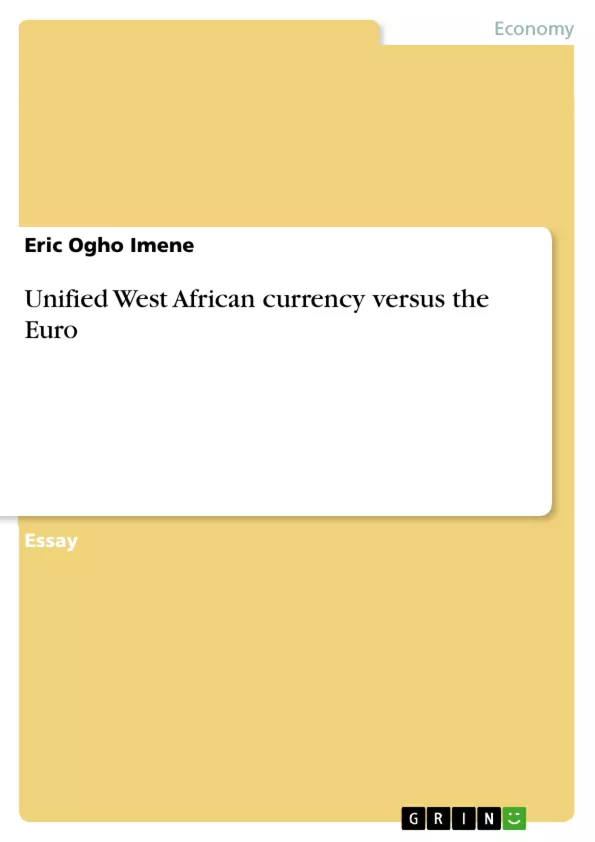The need for a unified currency for West African countries is borne out of its many years of economic ties since the formation of the Economic Community of West African States ECOWAS on 28 May 1975 through a Treaty signed in Lagos Nigeria. Nigerian Head of State Yakubu Gowon was the first President of ECOWAS between 28 May 1975 and 29 July 1975
ECOWAS has 15 member states as at February 2017. There are 5 English-speaking, 8 French-speaking, and two Portuguese-speaking members. The countries within the bloc occupy an area of 5,114,162 km2 and an estimated population of over 350 million. The main goal of the bloc is to achieve “collective self-sufficiency” through the formation and preservation of a common trade block and the maintenance of a joint peacekeeping force for regional stability. Peacekeeping efforts were successfully carried out in Ivory Coast in 2003, Liberia in 2003, Guinea-Bissau in 2012, Mali in 2013 and there was an intervention in Gambia in 2017 that forestalled impending crises. The operations of ECOWAS are implemented in three cooperating languages— English, French and Portuguese
Inhaltsverzeichnis (Table of Contents)
- Unified West African currency versus the Euro
- The need for a unified currency
- The West African Economic and Monetary Union
- West African Monetary Zone
- The Eco Currency
- Joining the euro zone
- How was the euro zone formed
- Benefits of common currency
- Conclusion
- Recommendations
Zielsetzung und Themenschwerpunkte (Objectives and Key Themes)
This article explores the potential benefits and challenges of introducing a unified currency for West African countries, comparing the proposed Eco currency with the Eurozone. The author analyzes the historical context, key players, and specific criteria for currency convergence.
- Economic integration and regional stability in West Africa
- Comparison of the Eco currency with the Eurozone
- Challenges and criteria for currency convergence
- Impact of a unified currency on economic development
- Potential benefits and drawbacks of a common currency
Zusammenfassung der Kapitel (Chapter Summaries)
- The first chapter introduces the concept of a unified currency for West African countries, outlining the historical context and objectives of ECOWAS.
- The second chapter focuses on the West African Economic and Monetary Union (UEMOA), highlighting its objectives and the process of economic integration among its members.
- The third chapter discusses the formation of the West African Monetary Zone (WAMZ) and the proposed Eco currency, outlining its objectives and challenges.
- The fourth chapter delves into the criteria for joining the euro zone and compares them to the criteria for the Eco currency.
- The fifth chapter examines the benefits of a common currency, highlighting the advantages for consumers, businesses, and the overall economy.
Schlüsselwörter (Keywords)
The primary focus of this text is on the economic integration of West African countries and the potential benefits and challenges of introducing a unified currency. Key terms and concepts include ECOWAS, UEMOA, WAMZ, Eco currency, Eurozone, economic integration, currency convergence, regional stability, and economic development.
- Quote paper
- Eric Ogho Imene (Author), 2020, Unified West African currency versus the Euro, Munich, GRIN Verlag, https://www.grin.com/document/513640



